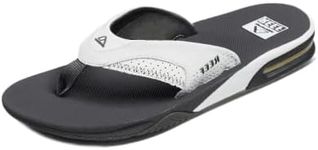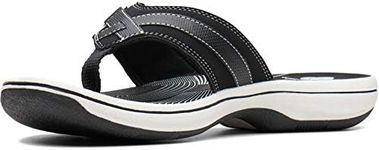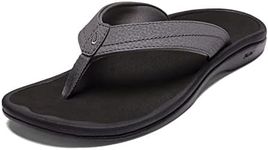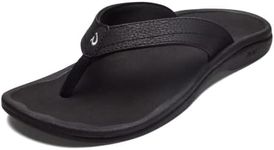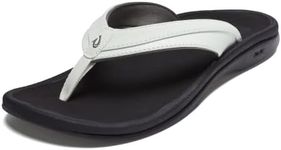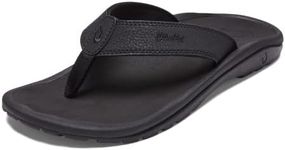Buying Guide for the Best Most Comfortable Flip Flops
Choosing the most comfortable flip-flops is all about understanding your feet and how you plan to use the footwear. Comfort can mean different things depending on whether you want flip-flops for the beach, walking long distances, or just lounging at home. The right pair should support your feet, feel good to wear for extended periods, and suit your lifestyle. Pay attention to the materials, fit, and support features, as these will make the biggest difference in how comfortable your flip-flops feel.Footbed MaterialThe footbed is the part of the flip-flop your foot rests on, and its material greatly affects comfort. Common materials include foam, rubber, leather, and synthetic blends. Foam and memory foam footbeds are soft and cushiony, making them ideal for people who want plush comfort for casual wear. Rubber footbeds are more durable and water-resistant, suitable for beach or pool use. Leather footbeds can mold to your foot over time and offer a premium feel, but they may not be ideal for wet environments. Think about where you'll wear your flip-flops most often and choose a footbed material that matches your needs for softness, support, and durability.
Arch SupportArch support refers to how well the flip-flop supports the natural curve of your foot. Some flip-flops are completely flat, while others have built-in arch support. If you have high arches or need extra support for long walks, look for flip-flops with noticeable arch contours. Flat flip-flops may be fine for short-term use or for people with naturally strong feet, but they can cause discomfort or pain if worn for long periods. Consider your foot shape and any history of foot pain when deciding how much arch support you need.
Strap Design and MaterialThe straps hold the flip-flop on your foot and can be made from materials like rubber, fabric, leather, or synthetic blends. Wide, padded, or fabric-lined straps tend to be more comfortable and less likely to cause blisters, especially if you plan to walk a lot. Thin or stiff straps can dig into your skin and cause discomfort. If you have sensitive skin or plan to wear your flip-flops for extended periods, look for soft, smooth, and well-padded straps.
Sole Thickness and CushioningThe thickness and cushioning of the sole determine how much shock is absorbed when you walk. Thicker, cushioned soles provide more comfort and protection from hard or uneven surfaces, making them a good choice for all-day wear or walking on rough ground. Thinner soles are lighter and more flexible but may not offer enough protection or comfort for long walks. Think about how much walking you'll do and the types of surfaces you'll encounter to decide on the right sole thickness for you.
Fit and SizingA good fit is essential for comfort. Flip-flops that are too small can cause your toes to hang over the edge, while those that are too large can make you trip or slip. Make sure the flip-flop fits snugly but not tightly, with enough room for your toes to move. Some brands offer half sizes or wide/narrow options, which can help you find a better fit if you have unique foot dimensions. Always try on flip-flops and walk around in them to ensure they feel comfortable and secure.
Grip and TractionThe bottom of the flip-flop, or outsole, should provide enough grip to prevent slipping, especially if you plan to wear them around water or on smooth surfaces. Look for textured or patterned outsoles that offer good traction. If you’ll mostly use your flip-flops indoors or on dry surfaces, grip may be less important, but for outdoor or wet use, it’s a key safety feature.
